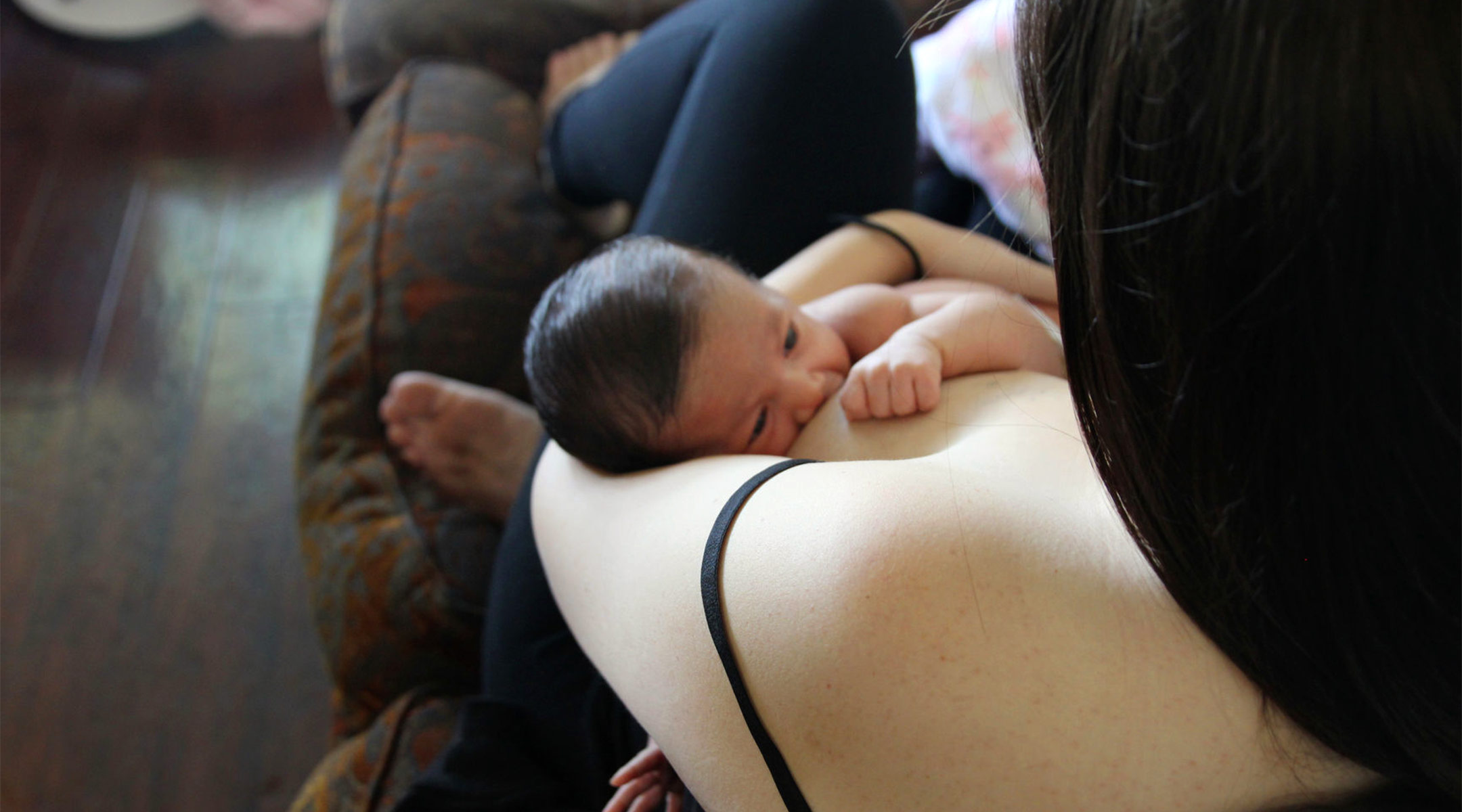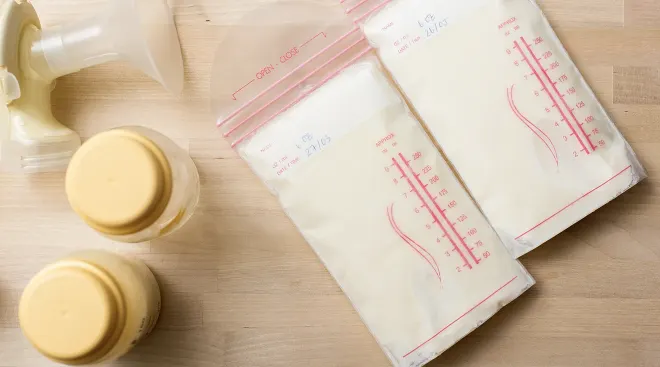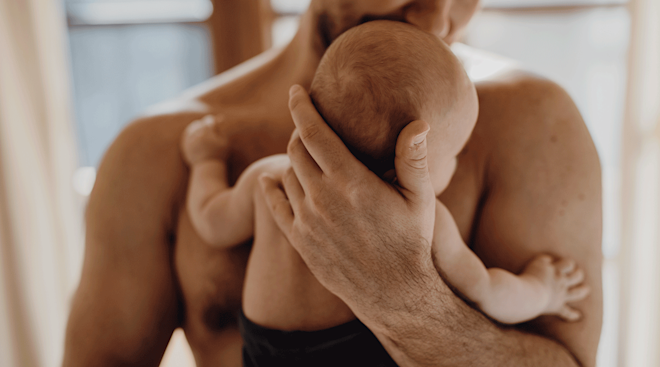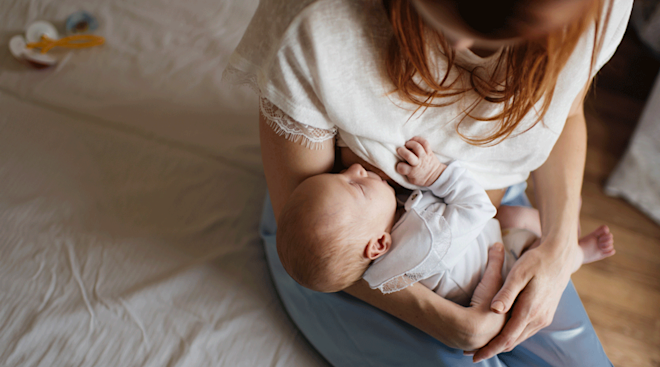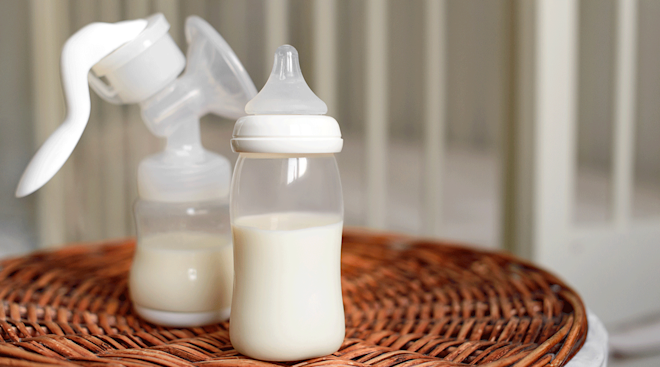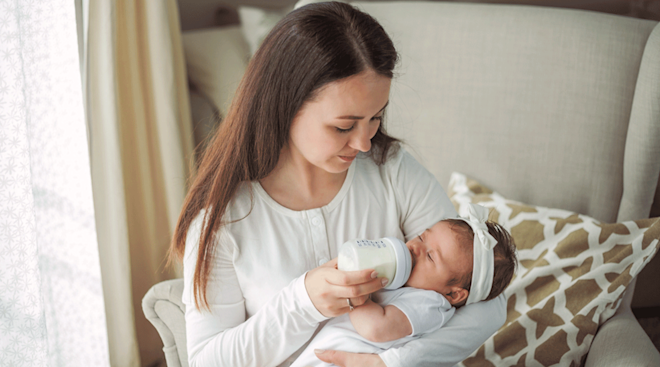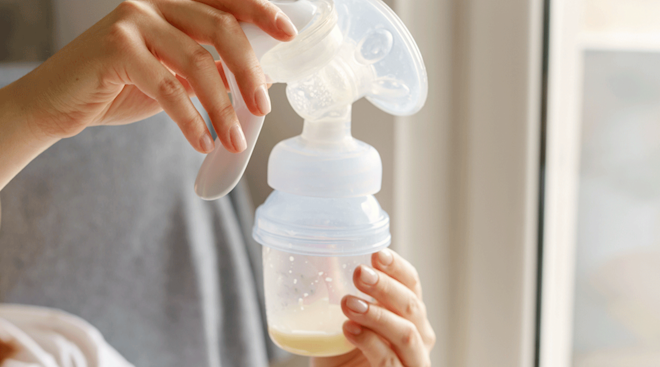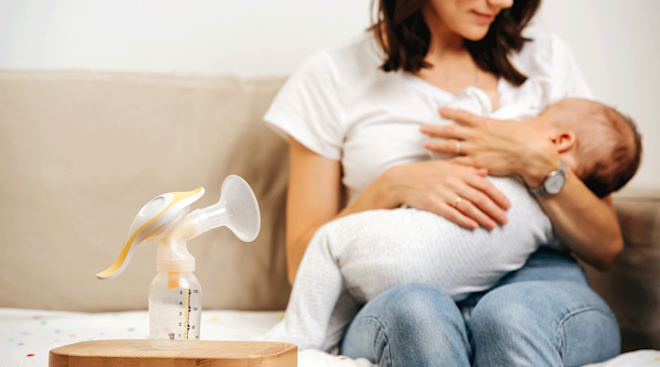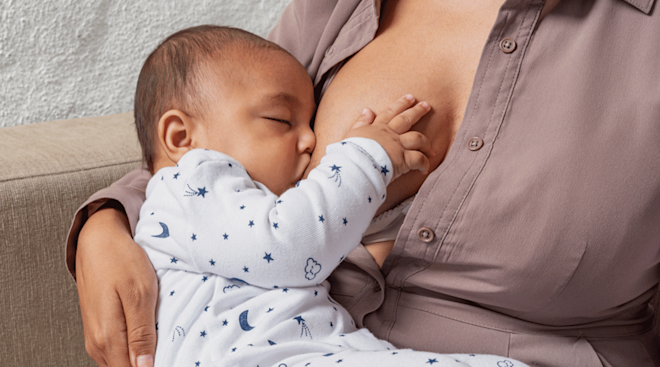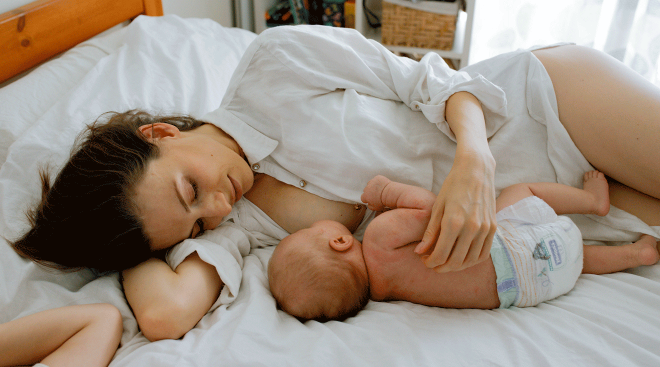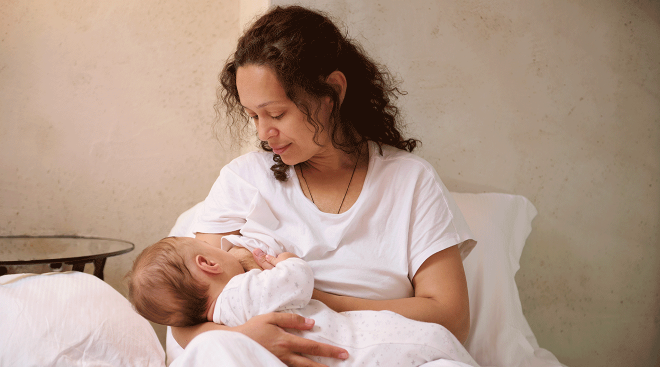How to Lose Weight While Breastfeeding
For most of us moms, there was at least one moment after giving birth when we caught a glimpse in the mirror of our postpartum body in all its stretched-out, bulbous glory and felt a wave of shock. Most of us want our pre-pregnancy body back as quickly as possible, but dropping those pounds postpartum—especially losing weight while breastfeeding, when you’re hungry all the time—isn’t always an easy feat, nor should it be rushed.
“In order to deliver a baby, everything in the body expands,” says Jennifer Ritchie, IBCLC, a lactation consultant in Newport Beach, California and author of I Make Milk, What’s Your Superpower? “Your hips expand, your ribcage expands. It took a good nine months to put that weight on, so give yourself at least nine months to get it off and get your body back.”
Once you’re past the first few weeks after giving birth (your body needs time to heal, after all), getting back to a shape you’re happier with is possible. Here are tips on how to lose weight while breastfeeding without impacting your milk supply.
One thing to keep in mind as you read: Your body just did something amazing! Growing baby took time, allow yourself that same time to heal, recover and get back to your pre-pregnancy body (if that is your goal).
Most experts don’t advocate dieting while breastfeeding. That’s because your body needs extra fuel to make breast milk—about 500 or so additional calories a day, says Mary Jane Detroyer, MS, RD, CDN, a New York City-based nutritionist, registered dietitian and personal trainer.
“We definitely recommend that mothers not go on a particularly restrictive diet—nothing that’s lower than 1,500 calories a day, which wouldn’t permit a robust milk supply,” adds Shannon Davids, MD, an OB-GYN at Thomas Jefferson University Hospital in Philadelphia. In general, she says, an 1,800- to 2,200-calorie diet a day is optimal for overall nutrition, recovery and breastfeeding.
While some nursing women shed pounds quickly, since the act of making milk burns off a lot of calories, others have to be more mindful in balancing how much they eat versus what they eat to reach a more homeostatic weight, says Detroyer. Read on to learn which foods are best—and best avoided—to support your goals of losing weight while breastfeeding.
For the fastest way to lose weight while breastfeeding, don’t count calories, says Detroyer—rather, be mindful of the quality of foods you’re eating. Instead of eating less, which would likely impact your milk supply, make your meals healthy and nutritious and just a bit bigger than normal. “Add an extra ounce or two of protein at a meal, a cup of starch and a quarter cup of veggies—that’s all you need,” she says. “Problems arise when you substitute nutrient-dense food for others because they’re quick and easy.”
Grabbing the nearest bag of chips or cookies when you’re exhausted and between feedings might be convenient, but cheese or a handful of almonds or crackers spread with peanut butter are better options. Try to stock up on these food groups to get your body back on track and keep your breast milk as nutritious as possible:
-
Fruits, vegetables and grains for minerals and vitamins. Detroyer suggests whole wheat, rye, quinoa, millet and farro.
-
Starches that provide energy to help your body produce milk. Good options include winter squash, beans, potatoes, pasta and rice.
-
Lean protein from meat, fish and nuts to help build and repair body tissue.
-
Fat. Your diet doesn’t influence how much fat ends up in your milk, but it does impact the type. Olive oil, cheese, eggs, avocados, nuts and seeds help provide a good balance of monounsaturated and omega-3 fatty acids, which are vital for baby’s brain development.
-
Water. Breast milk is about 90 percent water, but you don’t have to chug water constantly to stay hydrated (and drinking more won’t produce excess milk). Drink when you’re thirsty and keep an eye on the color of your urine. If it’s dark, you need to take in more fluids.
These are some foods that experts advise limiting to support losing weight while breastfeeding:
-
Snack foods with empty calories, like chips, candy and soda.
-
Sugary foods, which have been shown to contribute to inflammation.
-
Alcohol, which in large amounts via breast milk could impair baby’s development.
Being mindful of what you eat is the best way to jumpstart your metabolism and lose weight while breastfeeding without sacrificing the quality or quantity of your breast milk, but postpartum exercise should be part of your regime too. Not only will it boost your energy, but engaging in light movement as soon as you feel up to it will help get your stretched-out abdominal muscles back into shape.
“It’s not just about the extra pounds; your body tissue changes too,” says Susan Clinton, PT, a physical therapist and co-founder of Embody Physiotherapy and Wellness in Sewickley, Pennsylvania. “A lot of people look at a drooping belly as fat to lose, but it’s more that the muscles need to learn to come back into a shortened position to be part of the abdominal wall again.”
The natural weight-lifting program of early motherhood—lifting your newborn, walking up and down stairs, pushing the stroller—are enough to get started in the first two or three weeks after giving birth, says Clinton, noting that even women who didn’t experience tearing or an episiotomy need time for their pelvic muscles to heal. “As long as you’re staying active, your body will start to change,” she says.
Other ways to help tone your muscles after giving birth and lose weight while breastfeeding:
-
Do Kegel exercises to help strengthen your pelvic muscles more quickly.
-
Pull in your stomach, which can also help toughen up muscles.
-
Gentle (not deep!) stretching with a resistance band to work the parts of your body strained by breastfeeding: your shoulders, back and chest.
-
Go for a walk, even a short one, each day.
-
Hold baby close to your body to protect your abdominal wall.
Even once your healthcare provider gives you the green light to start exercising more regularly, you should still go easy. “If you’re super-fatigued, the worst thing you can do is get all crazy with high-intensity exercise,” says Clinton. “It could actually make you gain weight instead of burning excess calories.” Usually doctors will recommend moms to start regular exercise 6 weeks after a vaginal delivery, unless they’ve had a severe vaginal tear. For women who’ve had a severe vaginal tear, or who’ve had a c-section, doctors will generally recommend waiting until 8 weeks.
To help you in losing weight while breastfeeding, try to work yourself up to 150 minutes of moderate aerobic activity per week, which is about 20 to 30 minutes a day of walking. You can also resume things like yoga or tai chi, especially if you were practicing before baby. While exercising doesn’t impact the composition of your breast milk, you should replace any fluid you lose through sweating to keep your milk supply up, says Davids. You also might want to pump or nurse before working out so you’re not uncomfortably engorged.
Signs you may be working your body too hard too soon: You regularly leak urine while running, leaping or sneezing during workouts or you experience recurring joint pain. “Don’t brush any of this off to ‘Oh, I just had a baby,’” says Clinton. “These are signs your system isn’t optimal and you need to go back to your medical team.”
The true secret to losing weight while breastfeeding? Stay away from social media feeds, magazine articles and TV shows that showcase how quickly others lost their baby weight, and focus on your own journey. “Don’t compare yourself to anyone else,” says Detroyer. “You’ll just drive yourself crazy.” Everyone loses weight at a different rate. Instead of obsessing over numbers on the scale, strive toward getting to a point where you feel healthy, happy and strong. Postpartum bodies all look different, but every mama is a warrior!"
Remember that growing and giving birth to baby is no small feat. Your postpartum body is a reminder you just did something amazing. If you are keen to get back to your pre-pregnancy body, remember to do it in a way that best serves you and baby.
About the experts:
Jennifer Ritchie, IBCLC, is a lactation consultant in Newport Beach, California. She’s the founder and owner of Milkalicious and author of I Make Milk, What’s Your Superpower?.
Mary Jane Detroyer, MS, RD, CDN, is a registered dietitian, exercise physiologist and certified personal trainer with more than 20 years of experience working in health and fitness. She operates a private practice in New York City, Mary Jane Detroyer & Associates.
Shannon Davids, MD, is an OB-GYN at Thomas Jefferson University Hospital in Philadelphia. She completed her medical degree at SUNY Upstate Medical Center, Medical School.
Please note: The Bump and the materials and information it contains are not intended to, and do not constitute, medical or other health advice or diagnosis and should not be used as such. You should always consult with a qualified physician or health professional about your specific circumstances.
Plus, more from The Bump:
Navigate forward to interact with the calendar and select a date. Press the question mark key to get the keyboard shortcuts for changing dates.
































